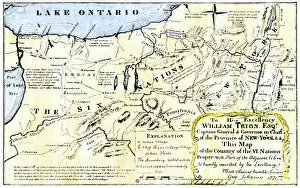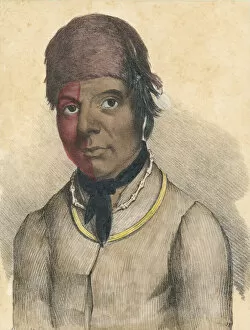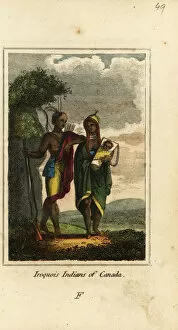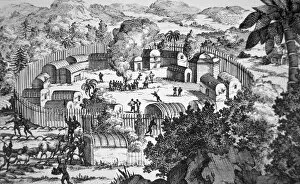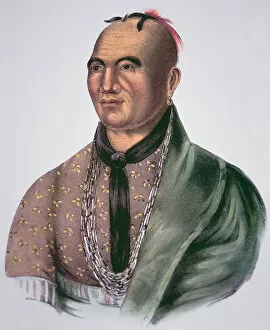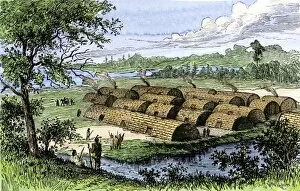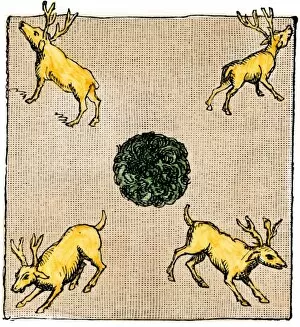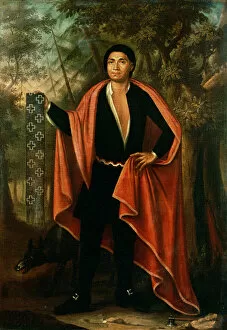Iroquois Confederacy Collection
The Iroquois Confederacy, also known as the Haudenosaunee
For sale as Licensed Images
Choose your image, Select your licence and Download the media
The Iroquois Confederacy, also known as the Haudenosaunee, was a powerful alliance of Native American tribes that played a significant role in shaping the history of North America. Founded by five nations - Mohawk, Oneida, Onondaga, Cayuga, and Seneca - this confederacy established a unique system of governance that influenced democratic principles. One notable figure within the Iroquois Confederacy was John Skenandoa, or Shenandoah. As chief of the Oneida tribe during the 18th century, he demonstrated his allegiance to different sides during times of conflict. Supporting the British in the Seven Years War and later backing colonial forces during the Revolutionary War showcased his adaptability and strategic thinking. Shenandoah's influence extended beyond warfare; it is believed that George Washington honored him by naming the Shenandoah River after him. This recognition highlights their relationship and mutual respect between indigenous leaders and early American figures. Engravings from 1818 depict scenes of Iroquois Indians in Canada living their daily lives. These images provide glimpses into their vibrant culture and traditional practices passed down through generations. Another engraving showcases an Iroquois village along the Susquehanna River in exquisite detail from 1651. The meticulous artistry captures not only architectural aspects but also offers insight into community dynamics within these settlements. Joseph Brant emerges as another prominent figure among the Iroquois people. As Chief of Mohawks during tumultuous times like colonization efforts by European powers, Brant navigated complex political landscapes while striving to protect his people's interests. The Central Council House served as a symbolic center for decision-making within this confederacy—a place where representatives from each nation gathered to discuss matters affecting all member tribes' welfare. Maps dating back to the 1600s illustrate how expansive and influential this confederacy was across vast territories.

